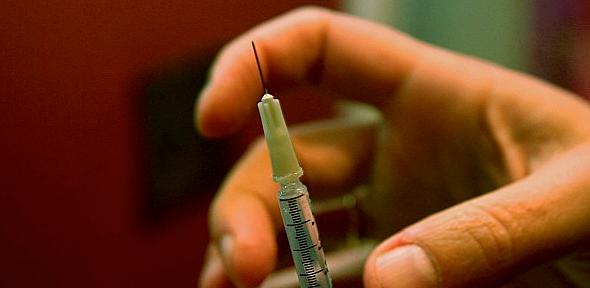
A gap in scientific knowledge about a family of drugs that are used to treat Type 2 diabetes has been highlighted in a new study.
Researchers behind the study say that while their results are speculative at this stage, they point to a lack of complete information about the potential impact of a group of treatments known as GLP-1 agonists, or incretin mimetics.
In particular, their survey found that one such treatment has the hitherto unrecognised potential to activate receptor sites for the hormone, glucagon. This can promote the release of sugars into the blood, which is a process that GLP-1 agonists are supposed to prevent.
The paper, which is published in The Journal Of Biological Chemistry, stresses that these are only initial findings, and that more in-depth research will be needed before “definitive conclusions can be drawn” about the existing results.
The researchers also say that there is no evidence that existing GLP-1 agonists are in any way dangerous for patients, but they do call for a more comprehensive approach to testing new drugs of this type, before they are released on to the market.
The work was carried out by a team of researchers, led by academics from the University of Cambridge and the University of Warwick. Dr Graham Ladds, from the Department of Pharmacology and St John’s College, University of Cambridge, said: “What we have shown is that we need a more complete understanding of how anti-diabetic drugs interact with receptors in different parts of our bodies.”
“GLP-1 agonists clearly benefit many patients with Type 2 diabetes and there is no reason to presume that our findings outweigh those benefits. Nevertheless, we clearly lack a full picture of their potential impact. Understanding that picture, and being able to consider all the components of target cells for such treatments, is vital if we want to design drugs that have therapeutic benefits for diabetes patients, without any unwanted side effects.”
People affected by diabetes suffer from excessively high blood sugar levels and resulting complications, caused by the fact that their body does not produce enough insulin – the hormone that enables the uptake of sugar from food. According to the World Health Organisation, about 347 million people worldwide have diabetes and it is likely to become the seventh leading cause of death in the world by the year 2030. Among adults, Type 2 diabetes accounts for the vast majority of cases.
GLP-1 agonists are a group of injectable drugs which are normally prescribed to patients who have not been able to bring their condition under control through lifestyle changes or with first-stage, tablet treatments.
They work by imitating the effects of a naturally-occurring hormone, called a Glucagon-like peptide (GLP-1). This regulates blood sugar levels both by stimulating the release of insulin, and also by inhibiting glucagon, another hormone which allows the liver to release stored sugar into the bloodstream.
In addition, both GLP-1 and GLP-1 agonists have a number of other potentially beneficial effects. These include telling the brain when a person is full, and clinical trials have shown that some GLP-1 agonists can promote weight loss.
Like other peptides, GLP-1 takes effect by binding to specific receptor sites in the cells of our bodies. GLP-1 agonists are synthetic molecules which are designed to bind to these receptors in the same way.
Building on previous research, however, the new study investigated the possibility that instead of activating these receptors, GLP-1, or treatments which mimic it, might bind to the receptor for glucagon instead. This belongs to the same general “family” of receptors, but activating it could cause an unwanted side-effect for people with diabetes because it can potentially enable the release of more sugar into the bloodstream.
Although a limited number of previous studies had suggested that this was not possible, the team’s lab-based tests discovered that in certain conditions, GLP-1 can bind to the glucagon receptor. Their initial experiments, carried out on yeast containing the receptor, found that it was activated not only by GLP-1, but also by a GLP-1 agonist, which was among three such drugs that the group tested. Further experiments were then carried out in a mammalian cell culture, with similar results.
The researchers found that the decisive element was another protein called a receptor activity-modifying protein (RAMP2). When RAMP2 was present, it prevented the peptides – including the diabetes treatments – from binding to the glucagon receptors. In its absence, however, binding became possible.
Little is currently known about RAMP2. Tests in mice have, however, shown that its levels vary in different parts of the body. In the liver, where glucagon receptors stimulate the release of sugar into the blood, levels of RAMP2 appear to be lower than in other parts of the body. As a result, it is possible that some GLP-1 agonists could activate these receptors and, potentially, promote the effects of glucagon, which they are supposed to inhibit.
“The work shows that, contrary to our previous assumptions, glucagon receptors can potentially be activated by anti-diabetic treatments,” Dr Ladds added. “To date, very little work has been done on RAMPs, but they clearly play an important part in the process of regulating blood sugar, which is core to helping people with diabetes. The study shows that there is a critical need to take this into account when designing new therapeutics.”
The study was funded by the Biotechnology and Biological Sciences Research Council (BBSRC - Grant numbers: BB/G01227X/1 and BB/M000176/1).
Reference:
Weston, Cathryn et. al. 'Modulation of Glucagon Receptor Pharmacology by Receptor Activity-modifying Protein-2 (RAMP2).' Journal of Biological Chemistry (2015). DOI: 10.1074/jbc.M114.624601.
Scientists have found that some drugs from a group of anti-diabetic treatments may, in certain circumstances, act on glucagon receptors in the body, meaning that they could also potentially enable the release of sugar into the bloodstream.

The text in this work is licensed under a Creative Commons Attribution 4.0 International License. For image use please see separate credits above.